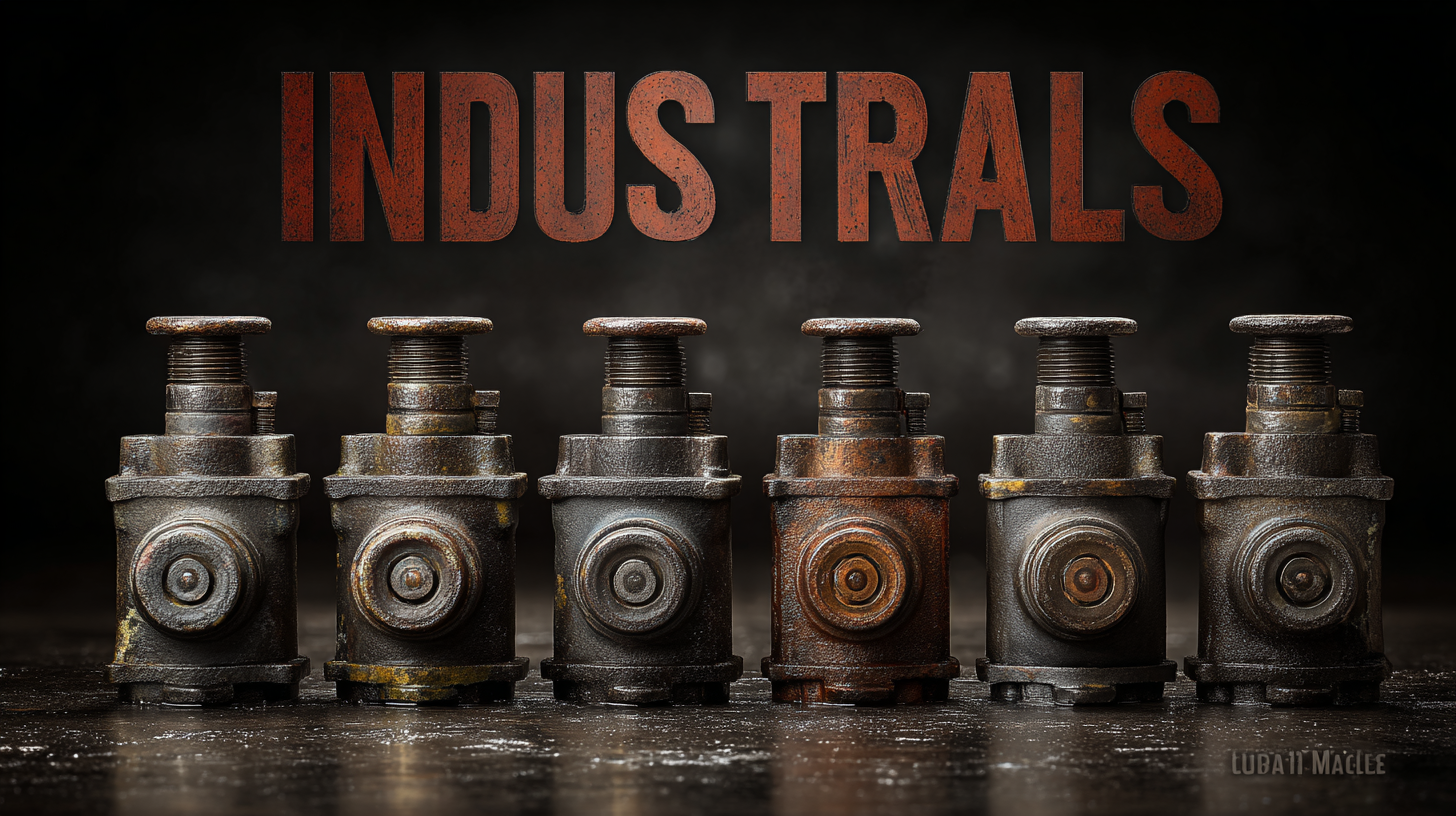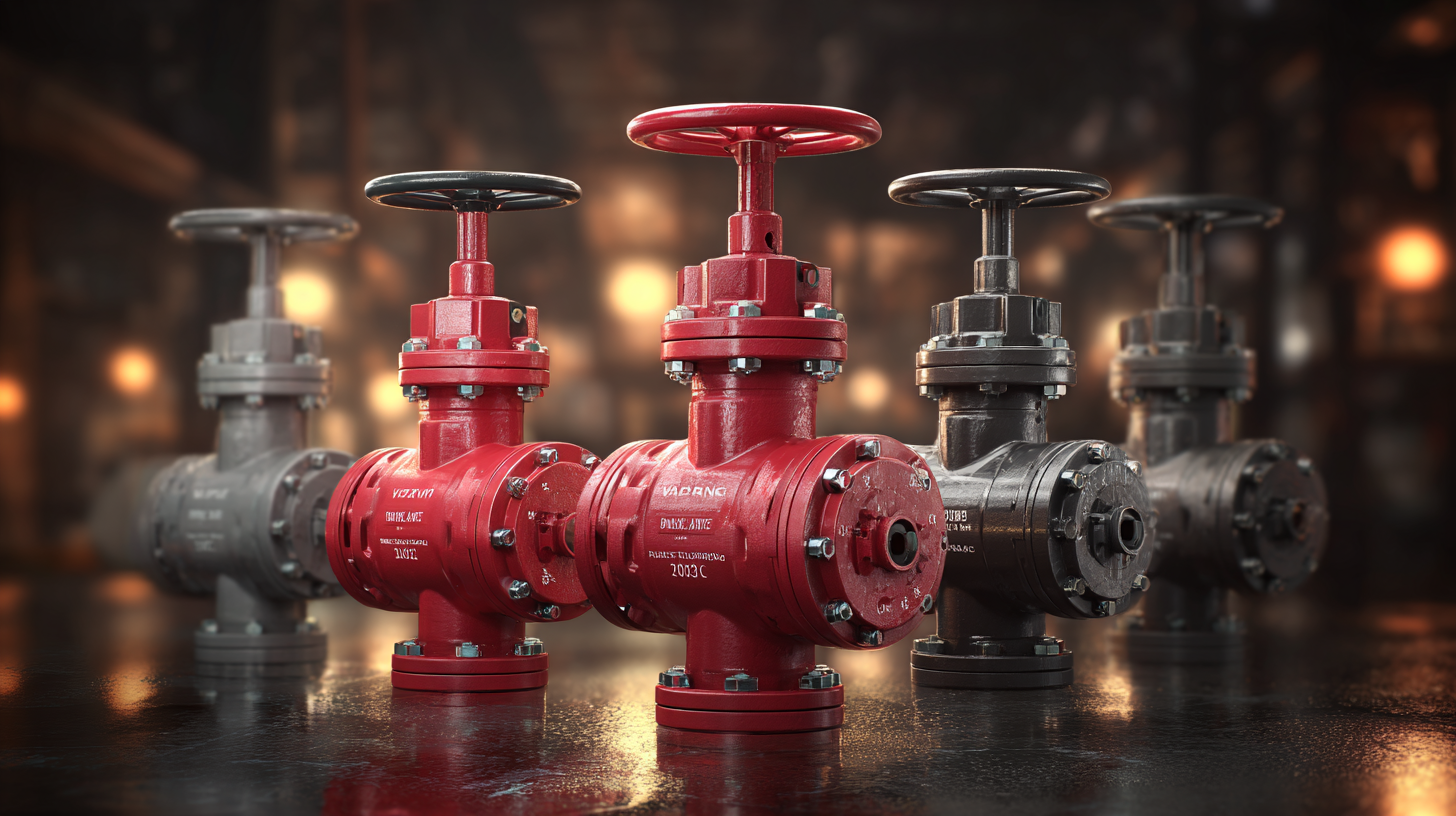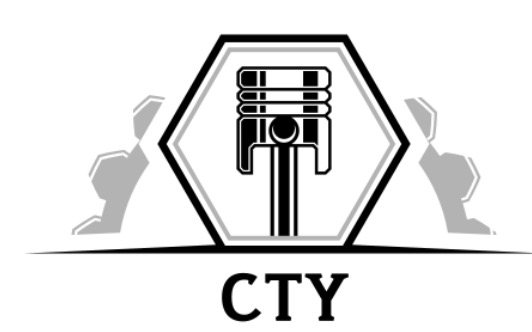- Home Page
- Company Profile
-
Our Products
- Hydraulic Pumps
- Hydraulic Solenoid Valves
- Conventional Valves
- Proportional Valves
- Safety Valves
- Mobile Control Valves
- Hydraulic Motor
- Cylinders and Servo Cylinders
- Hydraulic Filters
- Hoses and Fittings
- Gates Hydraulic Hose
- MP Filters Filters
- Dowty Gear Pumps
- Polyhydron Valves
- Manifold Blocks
- Walvoil
- Spica
- Hand Pumps
- ATOS Hydraulic Components
- Blog

Maximize Your Budget with 7 After Sales Service Tips for Best Industrial Valves
In the competitive landscape of the industrial sector, effective after-sales service plays a crucial role in maximizing the return on investment for industrial valves. According to a report by MarketsandMarkets, the global industrial valves market is projected to reach $123.1 billion by 2026, driven by increasing demand for operational efficiency and enhanced safety in various industries. However, simply purchasing high-quality industrial valves is not enough; manufacturers must also focus on providing exceptional after-sales support to ensure longevity and optimal performance. By implementing strategic after-sales service practices, companies can not only enhance customer satisfaction but also reduce operational downtime, thereby maximizing their budget. This blog outlines seven essential tips for improving after-sales service for industrial valves, enabling businesses to thrive in a constantly evolving market.

Understanding the Role of After Sales Service in Industrial Valve Applications
After sales service plays a crucial role in the industrial valve sector, particularly as the market gears up for significant growth in the coming years. The industrial valve market is projected to see revenues increase from $95.58 billion in 2024 to approximately $121.67 billion by 2035, highlighting the importance of efficient operational support post-purchase. This demand emphasizes the need for manufacturers to implement robust after sales strategies that enhance customer satisfaction and reduce operational downtimes.
To maximize the value of industrial valves, companies must focus on essential after sales service elements, such as maintenance, troubleshooting, and training. For instance, the sanitary butterfly valve market is expected to grow at a CAGR of 7.1% from 2025 to 2034, underscoring how crucial after sales support is when catering to specific applications. Establishing a reliable service framework not only helps in retaining customers but also positions companies favorably against competitors, especially amidst evolving commercial and industrial valve trends.
As the landscape becomes increasingly competitive, delivering exceptional after sales service will undoubtedly be a key differentiator for success in this booming market.
Key Benefits of Implementing After Sales Service for Industrial Valves
After-sales service plays a crucial role in maximizing the lifespan and efficiency of industrial valves, ultimately leading to significant cost savings and enhanced operational performance. According to a report by MarketsandMarkets, the global industrial valves market is projected to reach $93.1 billion by 2025, with a compound annual growth rate (CAGR) of 6.0%. This growth underscores the growing importance of effective maintenance and support services as companies recognize that proper after-sales care can extend the service life of these critical components.
Implementing robust after-sales service strategies can yield several key benefits. A study published by McKinsey indicates that companies that prioritize after-sales service can increase their profitability by 20-25%. By conducting regular maintenance checks and offering prompt repairs, firms can reduce downtime and improve their overall efficiency. Furthermore, establishing clear communication channels with clients not only fosters trust but also aids in gathering valuable feedback that can drive future innovations in valve technology. As the industry evolves, leveraging after-sales services becomes not just a competitive advantage but a necessity for sustainability and growth.
Maximize Your Budget with 7 After Sales Service Tips for Best Industrial Valves
| Tip No. | After Sales Service Tips | Key Benefits |
|---|---|---|
| 1 | Regular Maintenance Checks | Prevents unexpected failures |
| 2 | 24/7 Customer Support | Immediate assistance during issues |
| 3 | Training for Operators | Enhances operational efficiency |
| 4 | Prompt Spare Parts Supply | Reduces downtime |
| 5 | Troubleshooting Guides | Empowers users to solve issues |
| 6 | Software Updates | Improves performance and security |
| 7 | Feedback and Improvement Loop | Continuously enhances product quality |
Top 7 After Sales Service Tips to Enhance Your Industrial Valve Performance
After-sales service plays a crucial role in maximizing the performance of industrial valves. According to a recent report by Markets and Markets, the global industrial valves market is expected to reach $100 billion by 2025, driven by the increasing demand for efficiency and reliability in various industries. To enhance valve performance, consider implementing the following after-sales service tips.
First and foremost, regular maintenance is essential. Ensure that your valves are inspected and serviced periodically to prevent any potential failures. A well-maintained valve can operate 20-30% more efficiently, according to a study published by the American Society of Mechanical Engineers. This efficiency can significantly reduce operational costs and extend the lifespan of your equipment.
Another critical tip is to keep an open line of communication with your suppliers. Providing feedback on valve performance can lead to tailored solutions that meet specific operational needs. Additionally, many manufacturers offer training for personnel to maximize the effective use of their products, which can result in a decrease in downtime and improvement in overall performance. By engaging in these practices, industries can see a notable uplift in the reliability and functionality of their valve systems.

Real-World Case Studies Highlighting Successful After Sales Service in Valves
In the world of industrial valves, providing exceptional after-sales service is crucial for maintaining customer satisfaction and loyalty. Successful case studies reveal that companies that prioritize after-sales support often see enhanced performance and longevity of their products. For instance, one leading valve manufacturer implemented a robust training program for their service team, ensuring they were knowledgeable about the latest technologies and maintenance protocols. This initiative led to a significant reduction in downtime for their clients, with many reporting increased operational efficiency and reduced costs over time.
Another compelling example comes from a company that established a proactive service model. By utilizing predictive maintenance techniques, this organization was able to identify potential issues before they escalated, providing timely solutions that minimized disruptions in the client's workflow. The positive feedback received from customers not only strengthened their trust in the brand but also resulted in increased referrals and repeat business. These real-world case studies highlight that a strong commitment to after-sales service not only supports the immediate needs of customers but also fosters a long-lasting relationship built on reliability and trust.
How to Measure the Effectiveness of After Sales Service for Industrial Equipment
Measuring the effectiveness of after-sales service for industrial equipment, particularly industrial valves, is essential to ensure customer satisfaction and long-term operational efficiency.
 One key aspect is to track response times to service requests. A quick reaction can often mitigate potential downtime, making it vital for companies to establish benchmarks for service response times and regularly assess performance against these standards.
Furthermore, leveraging customer feedback is invaluable; conducting surveys post-service can provide insights into the customer experience and highlight areas for improvement.
One key aspect is to track response times to service requests. A quick reaction can often mitigate potential downtime, making it vital for companies to establish benchmarks for service response times and regularly assess performance against these standards.
Furthermore, leveraging customer feedback is invaluable; conducting surveys post-service can provide insights into the customer experience and highlight areas for improvement.
In addition to response times and customer feedback, analyzing the resolution rates of issues reported is crucial. Higher resolution rates not only reflect the service team’s competency but also enhance customer trust and loyalty. Companies can also utilize data analytics to identify common issues and trends in equipment failures. This proactive approach not only improves after-sales service but also aids in product development and design enhancements, ultimately leading to better products. By focusing on these metrics, businesses can refine their after-sales strategies and realize tangible benefits in their operations and customer relationships.
Developed and Managed byInfocom Network Private Limited.

 Send Inquiry
Send Inquiry
